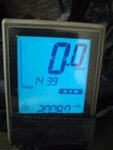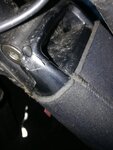Ghostman_132
New Member
Have you remembered to calibrate the battery often? It can be calibrated only when charging from fully depleted to 100% in one charge. One calibration charge will only correct 1/4 part of the real capacity value. So if you have capacity value of 500wh and you make one calibration charge which read out to be 400wh, it will change the capacity value only by 25wh -> new capacity value will be 475wh. That is why only one calibration charge is not enough to correct real value.21020 kilometers, absolute battery capacity still between 75 and 100%.
The cycles are no longer "countable" because I have more than 700 cycles.
At least this is what I have understood on how it works...


